It’s not all "pulp" that is sweet, sour and juicy. What you eat is actually these "parts" of fruit.
In the hot summer, delicious and juicy fruit has become a must-have for cooling off the heat. However, when we are feasting, have you ever wondered whether we are eating fruit pulp? Come and get to know them again with the Municipal Bureau of Greening and City Appearance.
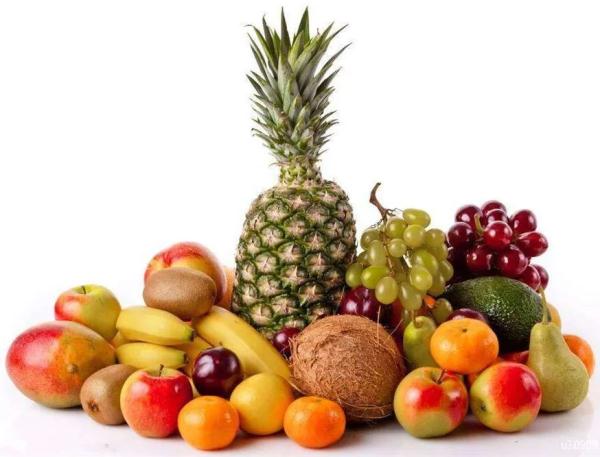
People used to think that the juicy part of fruits is their pulp. In fact, there is no concept of "pulp" in botany. Because when the fruit is still a flower, the seed is not a seed, but an ovule. These little guys with high hopes are born in the ovary of the pistil and protected by the ovary wall. With the vigorous growth of ovules, the ovary that protects them has also developed into the most dazzling part of the plant-the fruit. This kind of fruit developed from ovary is called true fruit, and the fruits of most plants belong to true fruit. The structure of true fruit is simple, with pericarp outside (developed from ovary wall) and seeds inside (developed from ovule). Pericarp can be divided into exocarp, mesocarp and endocarp, and the three layers of pericarp are very different in different fruits. In addition to the ovary, there are other parts, such as flower receptacle, calyx, inflorescence axis and so on, which are also involved in the formation of fruits called false fruits.
peach
Take a peach as an example. The thin skin that is peeled off is its exocarp. The discarded peach stones (and the peach kernels inside) are endocarps and seeds. Therefore, the juicy peach meat that everyone eats is actually a fleshy mesocarp. This type of fruit also includes apricots, plums, plums, cherries and so on, which belong to Rosaceae with peaches.
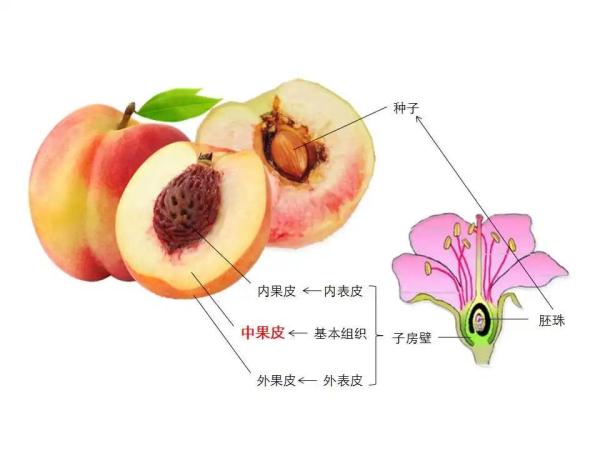
tangerine
Not all fruits are so "serious" as peaches. For example, the best part of orange fruits is actually in the endocarp. What is it?
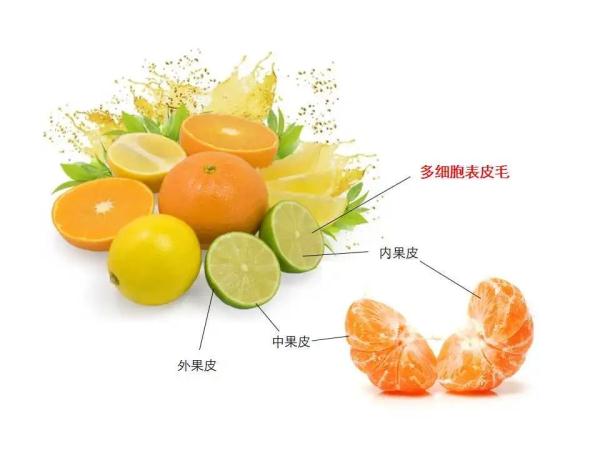
It is because the multicellular epidermis of the endocarp is specialized into juicy "meat strips". Simply put, the part we eat is "orange hair", and the orange peel we peel off is the part that closely combines the exocarp and mesocarp, while the "orange network" that some obsessive-compulsive babies dislike is the product of the specialization of the inner layer of mesocarp.
strawberry
A little bit of strawberry skin can grow strawberries, but this little black dot is not the seeds of strawberries. Small dots distributed on the surface of strawberry are the real fruits. These small achenes get together. In botany, we call it "aggregate fruit". The red part we eat is its swollen fleshy receptacle.

watermelon
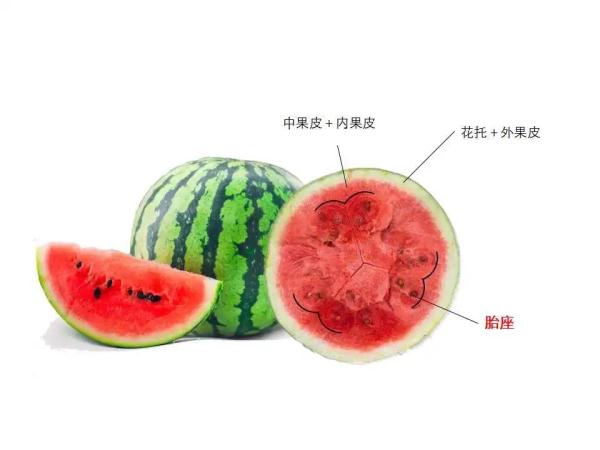
The receptacle of watermelon is also involved in the development of fruit, but it is only in the "watermelon skin" part. If you cut the watermelon in half, you will find three heart-shaped dividing lines inside. The part outside the dividing line is the middle and inner layers of pericarp after pulp expansion. Within the dividing line, it is the soul of watermelon-that is, the pulp we eat is actually its placenta (where the ovule is born).
lychee
Peel off the uneven shell of litchi, and there is a white film inside, which is its endocarp. The plump and crystal-clear part that we usually eat is the aril of litchi.
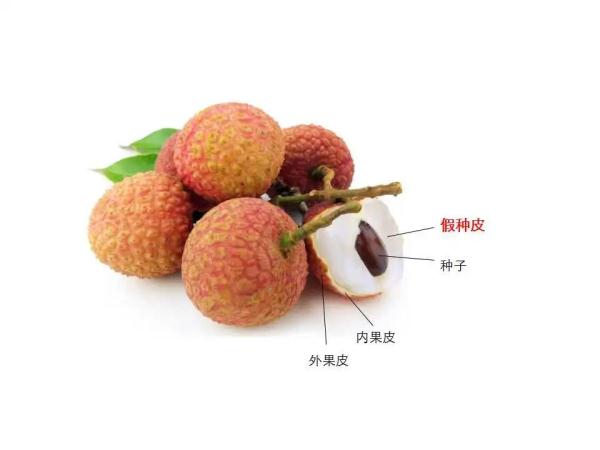
The aril of litchi is developed from the suspensor (the part where the base of ovule connects with the placenta) and its placenta. Aril is a special kind of seed coat appendage, which is a structure developed by seed plants to adapt to the environment and has important biological research value. Like litchi, the edible parts of many tropical fruits such as longan and durian are arils.
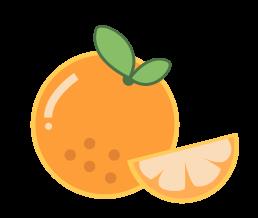
Say so much.
It turns out that all the fruits we eat are not necessarily pulp.
So, everyone is going to eat the skin and fur of fruit.
Placenta or aril?
Materials: Municipal Bureau of Greening and Appearance, Shanghai Botanical Garden.
Source: Shanghai release